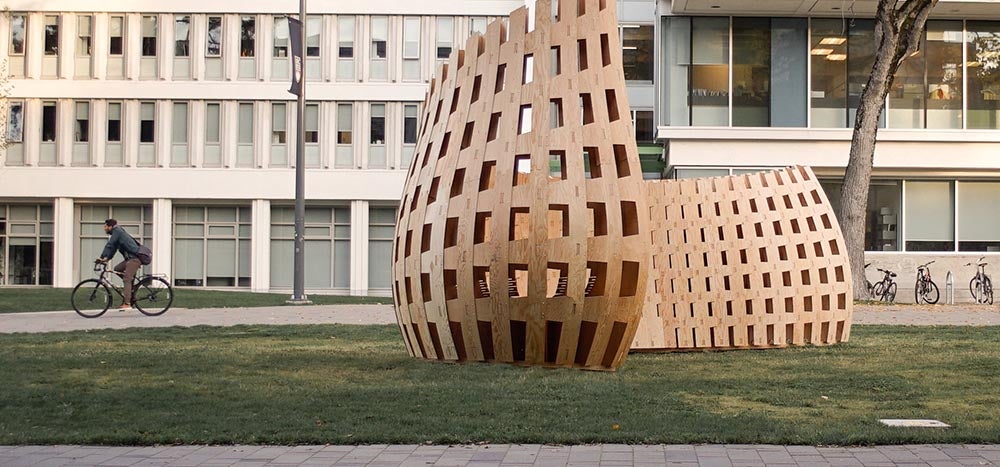A professor at the School of Architecture at the University of Waterloo had a lead role in a recent project to build an experimental wooden structure using state-of-the-art robotic tools.
David Correa and a team of about three dozen architecture students and industry partners completed the elaborate bench during a five-day workshop on robotic timber fabrication at the University of British Columbia in Vancouver last month.

The Wander Wood Pavilion, fabricated from a digital 3D model using state-of-the-art robotic tools, will remain on the Vancouver campus of UBC for about a year.
Called the Wander Wood Pavilion, the installation will remain on the UBC campus for about a year. It is the third year in a row Correa has been involved in the construction of similar structures using advanced fabrication methods.
Two rows of interlocking wooden slats for the sculptural bench, designed using 3D computational tools, were made with an eight-axis industrial robot. About 2,200 rivets were then used for assembly in combination with overlapping wooden teeth on the components.
“Parametric design and robotic fabrication are disruptive new technologies in architecture that allow us to build high-performance structures of unprecedented formal complexity,” the team said in its project description.
Correa co-led the workshop with Oliver David Krieg of Lang Wilson Practice in Architecture Culture and AnnaLisa Meyboom, a professor at the School of Architecture and Landscape Architecture at UBC. Funding was provided by Forestry Innovation Investment.
A story about the project appeared on Dezeen, a leading design blog.